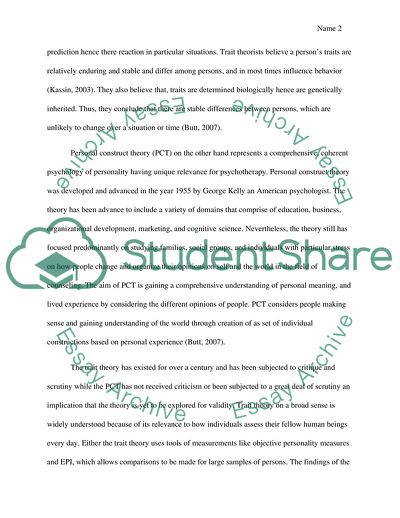Cite this document
(Aims and Methods of Trait Theory Essay Example | Topics and Well Written Essays - 1750 words, n.d.)
Aims and Methods of Trait Theory Essay Example | Topics and Well Written Essays - 1750 words. https://studentshare.org/psychology/1816745-compare-and-contrast-the-aims-and-methods-of-trait-theory-with-those-of-personal-construct-theory
Aims and Methods of Trait Theory Essay Example | Topics and Well Written Essays - 1750 words. https://studentshare.org/psychology/1816745-compare-and-contrast-the-aims-and-methods-of-trait-theory-with-those-of-personal-construct-theory
(Aims and Methods of Trait Theory Essay Example | Topics and Well Written Essays - 1750 Words)
Aims and Methods of Trait Theory Essay Example | Topics and Well Written Essays - 1750 Words. https://studentshare.org/psychology/1816745-compare-and-contrast-the-aims-and-methods-of-trait-theory-with-those-of-personal-construct-theory.
Aims and Methods of Trait Theory Essay Example | Topics and Well Written Essays - 1750 Words. https://studentshare.org/psychology/1816745-compare-and-contrast-the-aims-and-methods-of-trait-theory-with-those-of-personal-construct-theory.
“Aims and Methods of Trait Theory Essay Example | Topics and Well Written Essays - 1750 Words”. https://studentshare.org/psychology/1816745-compare-and-contrast-the-aims-and-methods-of-trait-theory-with-those-of-personal-construct-theory.


